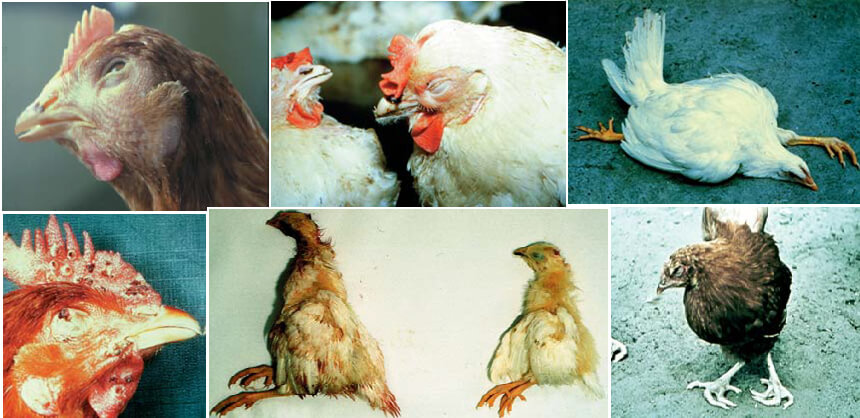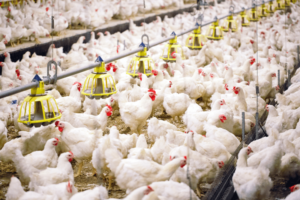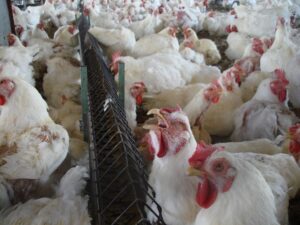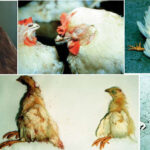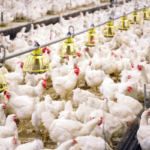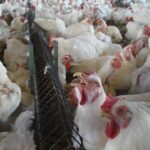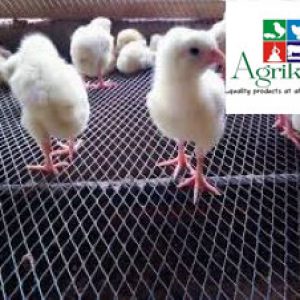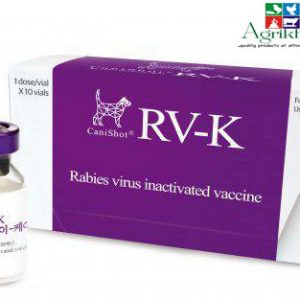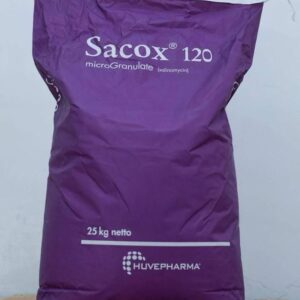There are several common poultry diseases that can affect chickens, ducks, turkeys, and other poultry species. Here are a few examples of poultry diseases and some general guidance on how to address them:
Avian Influenza (Bird Flu):
- Symptoms: Sudden death, respiratory distress, decreased egg production, swelling of the head, and blue discoloration of the comb and wattles.
- Control Measures: Isolate and quarantine infected birds, implement strict biosecurity measures, and report the disease to local veterinary authorities.
Newcastle Disease:
- Symptoms: Respiratory distress, greenish diarrhea, nervous signs (twisting of the neck, paralysis), and decreased egg production.
- Control Measures: Vaccination, quarantine and culling of infected birds, proper disposal of carcasses, and improved biosecurity practices.
Infectious Bronchitis:
- Symptoms: Respiratory distress, coughing, sneezing, nasal discharge, decreased egg production, and poor egg quality.
- Control Measures: Vaccination, isolation of infected birds, maintaining proper ventilation, and disinfecting the premises.
Coccidiosis:
- Symptoms: Diarrhea (sometimes with blood), decreased appetite, decreased activity, and poor growth.
- Control Measures: Regular use of coccidiostats in feed or water, maintaining good hygiene and sanitation, and preventing overcrowding.
Marek’s Disease:
- Symptoms: Paralysis of legs or wings, weight loss, tumor formation, and mortality.
- Control Measures: Vaccination of chicks, good biosecurity practices, and removing and replacing litter in poultry houses.
Infectious Bursal Disease (Gumboro Disease):
- Symptoms: Diarrhea, decreased appetite, increased thirst, ruffled feathers, and immune suppression.
- Control Measures: Vaccination, strict biosecurity measures, and disinfection of premises and equipment.
Fowl Cholera:
- Symptoms: Sudden death, swollen joints, loss of appetite, yellowish diarrhea, and respiratory distress.
- Control Measures: Antibiotic treatment, vaccination in some cases, strict sanitation practices, and isolation of infected birds.
- Infectious Coryza:
- Symptoms: Swollen, puffy face, nasal discharge, difficulty breathing, reduced appetite, and decreased egg production.
- Control Measures: Antibiotic treatment, isolation of infected birds, good sanitation practices, and vaccination in some cases.
- Fowl Pox:
- Symptoms: Lesions on the skin, scabs on the comb, wattles, and inside the mouth, reduced appetite, and decreased egg production.
- Control Measures: Isolation of infected birds, good hygiene and sanitation, insect control, and vaccination.
- E. coli Infection:
- Symptoms: Depression, loss of appetite, increased thirst, diarrhea, and respiratory distress.
- Control Measures: Antibiotic treatment, improved hygiene and sanitation, clean drinking water, and stress reduction.
CONCLUSION
It’s important to note that these are just a few examples of common poultry diseases, and there are many others that can affect poultry. If you suspect any disease outbreak or notice unusual symptoms in your flock, it is best to consult with a veterinarian or poultry health professional for a specific diagnosis and appropriate treatment. Additionally, implementing good biosecurity practices, maintaining proper hygiene, and providing a balanced diet can help prevent the occurrence of many poultry diseases.
Call or Whatsapp for help and guideance us on 09073304544, 09160075991

